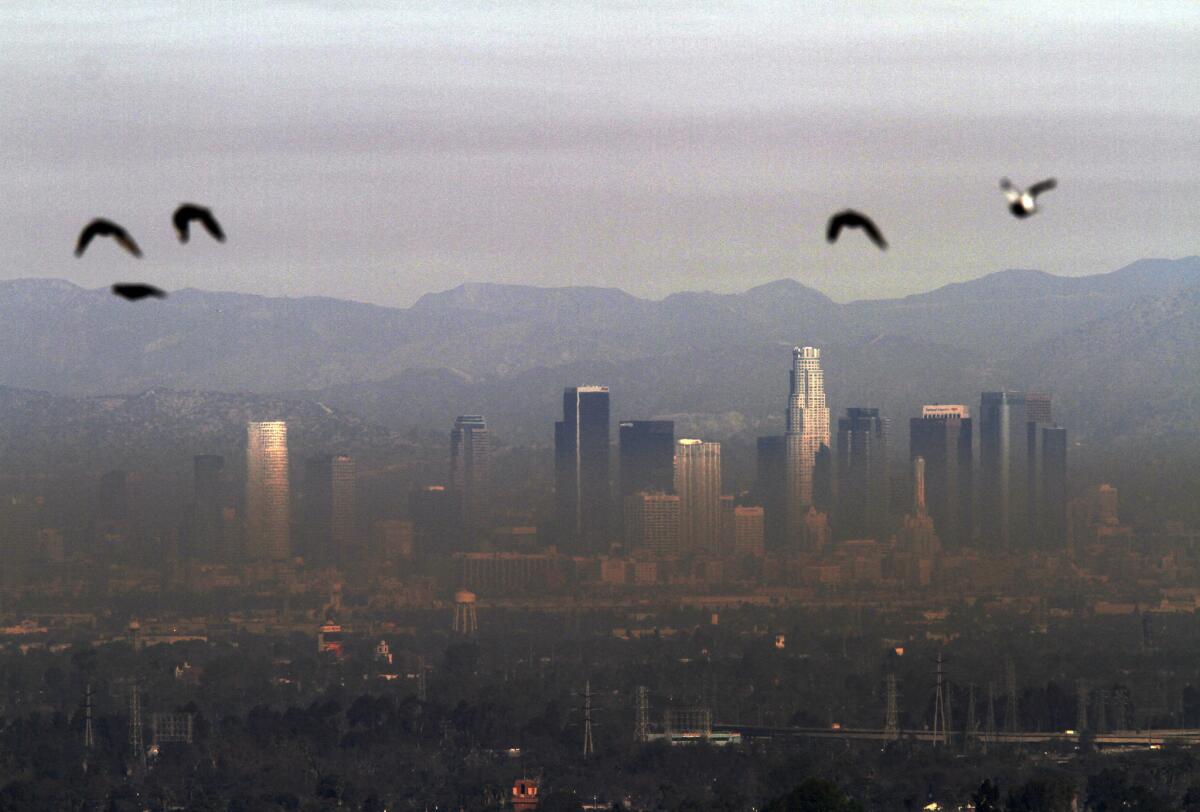Climate change threatens California’s air quality, report says

- Share via
Climate change and extreme weather could set back decades of improvement in California’s air quality, a new report by the state’s pollution control officers says.
A higher number of extreme heat days from global warming will boost smog formation and increase severe wildfires that release harmful smoke into the air, according to an annual report released Wednesday by the California Air Pollution Control Officers’ Assn.
“The achievements we’ve made to date could be put in peril,” said Jack Broadbent, air pollution control officer for the San Francisco Bay Area and president of the association, which represents the 35 air districts throughout the state.
In a telephone briefing, Broadbent described how California’s drought worsened air quality over the winter because of prolonged spells of dry, stagnant air that allowed higher concentrations of fine particle pollution, or soot, to build up close to the ground.
If dry weather with little circulation persists, it could allow higher levels of smog to build up during the summer and leave more dust lingering in the air this fall, Broadbent said. A buildup of dry vegetation is also expected to lead to more wildfires, generating more smoke, he said.
The 33-page report also highlights the tremendous progress California has made since decades ago, when choking air pollution shrouded Los Angeles and other cities.
Smog-forming emissions have dropped by more than half over 20 years, despite a growing population and more vehicle miles driven, because of the state’s tough air quality regulations, the report says. About 63% of Californians now live in areas that meet federal health standards for ozone, compared with 24% in 1990, according to estimates by the state Air Resources Board cited in the report.
But the state still faces significant obstacles to cleaning its air.
Thirteen basins in California did not meet federal standards for ozone in 2013, the report says. And two of the nation’s most polluted basins, in Southern California and the San Joaquin Valley, are far from making it off that list.
Ozone, the worst component of smog, is one of the two main air pollutants that continue to plague California. The other is fine particulate matter, the microscopic soot that is considered the greatest public health risk.
A growing body of scientific studies shows that those and other air pollutants are harmful at lower levels than previously thought, the report notes, and the U.S. Environmental Protection Agency has strengthened its health standards in light of that evidence.
Climate change poses enough of a threat to clean air that pollution regulators should pursue new rules and regulations to reduce emissions of heat-trapping greenhouse gases at the local level, the report says.
Those strategies could target short-lived, planet-warming pollutants like methane, encourage dense development near transit stations or fund solar water heaters, electric vehicle charging stations and other carbon-cutting projects.
“The substantial financial investments already made in improving air quality would be wasted if we do not make forward progress,” the report says.
Twitter: @tonybarboza







